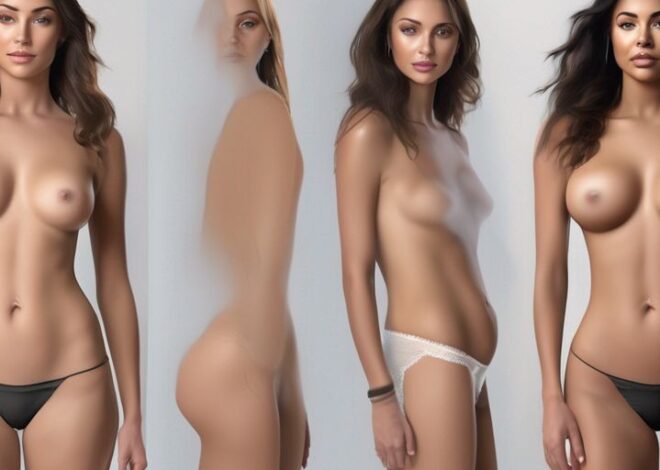
Exploring the Capabililities and Ethics of AI Undress Software
The development of AI undress software, which uses artificial intelligence to digitally remove clothing from images, has sparked a complex debate surrounding its capabilities and ethical considerations. This technology, exemplified by platforms like Nudify.Online, leverages cutting-edge AI to alter images in ways that raise significant ethical, legal, and social questions. This article explores the multifaceted aspects of AI undress technology, from its technological advancements to the profound implications it holds for privacy, legality, and societal norms.
Key Takeaways
- AI undress technology, such as Nudify.Online, utilizes sophisticated AI algorithms to digitally remove clothing from images, presenting advanced technological capabilities.
- The technology raises substantial ethical concerns, particularly regarding privacy, consent, and the potential for misuse in non-consensual contexts.
- Legal challenges include a lack of specific regulations, varying international laws, and the need for future legal frameworks to address these technologies.
- Social impacts are profound, influencing social norms, public perception, and issues related to body image and self-esteem.
- Future prospects of AI undress technology include potential positive uses, ongoing technological innovations, and the critical development of ethical guidelines.
Overview of AI Undress Technology

How AI Undress Software Works
AI undress software utilizes advanced machine learning algorithms to digitally remove clothing from images of individuals. This technology analyzes the image, identifies clothing, and reconstructs the hidden parts of the body based on learned patterns. The primary use of this technology is often controversial, raising significant ethical and privacy concerns.
Technological Advancements in AI Undress Software
Recent years have seen significant advancements in AI undress technology. Improvements in neural networks and image processing techniques have enhanced the accuracy and speed of these applications. For instance, Nudify.Online, a leading platform in this field, boasts the most advanced clothes-removing AI technology as of 2024.
Nudify.Online: A Case Study
Nudify.Online exemplifies the capabilities of modern AI undress software. It is an advanced web-application that allows users to digitally remove clothing from images with remarkable precision. The platform’s success highlights both the technological prowess and the potential ethical dilemmas posed by such applications.
Ethical Considerations of AI Undress Software

Privacy Concerns
The use of AI undress technology raises significant privacy concerns. Users of such software might unknowingly have their images processed, leading to unauthorized exposure. Ensuring robust data protection measures is crucial to safeguard personal privacy.
Consent and AI
Consent is a fundamental aspect when dealing with AI undress software. Without explicit consent from the individuals whose images are processed, the use of this technology breaches ethical norms and personal rights.
Potential for Misuse
The potential for misuse of AI undress technology is alarming. It can be used to create inappropriate content without the subject’s knowledge, leading to personal and professional harm. Preventive measures and strict regulations are necessary to curb such exploitations.
Legal Implications of Using AI Undress Technology

Current Legal Framework
The legal framework surrounding AI undress technology like Nudify.Online is still in its nascent stages. Most countries lack specific laws that regulate the use of such technology, leading to a legal gray area. Key issues include the lack of clarity on consent and the distribution of generated images.
International Regulations
International regulations vary significantly, with some countries having strict laws against the creation and distribution of synthetic media, while others have no regulations at all. This disparity makes it challenging for global platforms to comply with all local laws.
Future Legal Challenges
As AI undress technology evolves, future legal challenges will likely focus on privacy, consent, and the misuse of AI. Legislators will need to balance innovation with ethical considerations to protect individuals from potential harm.
Social Impact of AI Undress Software

Impact on Social Norms
The introduction of AI undress software has significantly altered social norms around privacy and body image. Public debates have intensified, questioning the boundaries of personal space and digital consent. This technology challenges traditional notions of modesty and could potentially desensitize society to nudity.
Public Perception and Acceptance
Public acceptance of AI undress technology is highly polarized. While some view it as a technological advancement, others see it as a threat to personal privacy. Surveys indicate a split in perception, with significant concerns about the potential for misuse and the ethical implications of such technology.
Influence on Body Image
AI undress software can have profound effects on body image and self-esteem. By creating unrealistic or altered images of bodies, it can contribute to body dissatisfaction and unhealthy beauty standards. Efforts to promote body positivity are often undermined by such technologies, which prioritize idealized images over genuine human diversity.
Technological Limitations and Challenges

Accuracy and Reliability
The accuracy and reliability of AI undress software are critical, yet they often fall short. Factors such as poor lighting, complex clothing patterns, and unusual poses can significantly degrade the performance. This inconsistency raises concerns about the practicality of these technologies in real-world applications.
Handling Diverse Body Types
AI undress technologies struggle with handling diverse body types, leading to inaccuracies and potential biases. The technology’s effectiveness varies greatly across different ethnicities, body shapes, and sizes, which can perpetuate stereotypes and unequal treatment.
Technical Barriers to Entry
High costs and sophisticated technical requirements limit access to AI undress technology. Only well-funded organizations or individuals can afford the necessary computational resources and expertise to develop and maintain such software, which stifles innovation and broad usage.
Future Prospects of AI Undress Technology

Potential Positive Uses
AI undress technology, while controversial, holds potential for positive applications beyond its initial scope. For instance, it could aid in creating more realistic virtual fitting rooms for online shoppers, enhancing the e-commerce experience. This could significantly reduce return rates and increase customer satisfaction.
Technological Innovations on the Horizon
The field is expected to see significant technological advancements. Innovations may include improved algorithms that handle diverse body types more accurately, enhancing the inclusivity and functionality of the technology.
Ethical Guidelines Development
As the technology evolves, so too must the ethical frameworks that govern its use. Developing comprehensive ethical guidelines will be crucial to ensure the technology is used responsibly and respects users’ privacy and dignity.
Conclusion
In exploring the capabilities and ethics of AI undress software, such as Nudify.Online, it is evident that while the technology showcases impressive advancements in AI, it also raises significant ethical concerns. The ability of these tools to manipulate images can lead to privacy violations, exploitation, and other moral dilemmas. As we continue to advance in the field of artificial intelligence, it is crucial to balance innovation with ethical considerations to ensure that technology enhances societal values rather than undermines them. The discussion around AI undress software is a reminder of the broader implications and responsibilities we hold in the development and deployment of AI technologies.
Frequently Asked Questions
What is AI Undress Software?
AI Undress Software is a type of technology that uses artificial intelligence to digitally remove clothing from images of people, often for various purposes including artistic, educational, or research applications.
How does AI Undress Software work?
AI Undress Software utilizes advanced machine learning algorithms and image processing techniques to analyze and reconstruct images where clothing is digitally removed, while attempting to maintain the integrity and realism of the underlying body image.
What is Nudify.Online?
Nudify.Online is an advanced web-application launched in 2024, designed to strip off clothes from people on images online using the latest clothes-removing AI technology.
Are there ethical concerns associated with AI Undress Software?
Yes, there are significant ethical concerns including privacy violations, non-consensual image manipulation, and potential misuse for harassment or exploitation.
What are the legal implications of using AI Undress Software?
The legal implications can vary widely depending on the jurisdiction, but often involve issues related to privacy, consent, and copyright laws. There may be legal risks if the software is used without the consent of the individuals depicted.
Can AI Undress Software be used positively?
While controversial, proponents argue that AI Undress Software could have positive uses in fields like art, fashion design, and medical research, provided it is used ethically and with proper consent.



